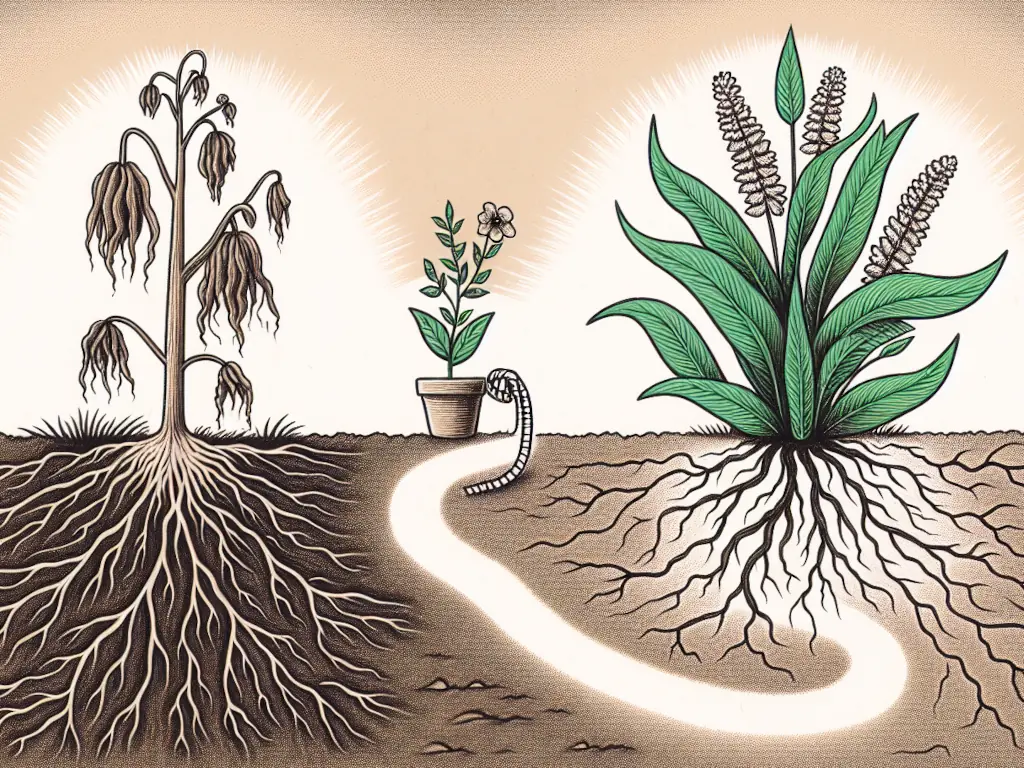Determining whether you are enabling or helping is crucial in healthy relationships and personal growth in those you care about. No fluff or complex jargon here – just straightforward insights to help you understand the behaviors that could either be beneficial or detrimental. Expect to learn how to recognize signs of both, and ways to transform your well-intentioned support into empowering assistance.
Key Takeaways
- Enabling behavior protects individuals from the consequences of their actions, reinforcing negative patterns, while helping promotes growth and self-reliance.
- Identifying enabling behaviors is crucial to stop perpetuating harmful patterns, while encouraging helping behaviors leads to personal responsibility and healthier relationships.
- Transitioning from enabling to helping requires setting boundaries, promoting personal responsibility, and seeking professional help to develop constructive support strategies.
Understanding How Family Members Enable vs Help

Often, individuals engage in enabling behaviors motivated by a wish to protect their loved ones from discomfort or pain. Yet, instead of fostering growth and development, such actions may inadvertently reinforce negative behaviors. Enabling provides a buffer that allows individuals to persist on their destructive path without facing the full repercussions of their actions. Conversely, helping involves providing a support system that fosters a person’s growth, learning, and attainment of goals. It centres on empowering them to tackle their issues head-on, rather than protecting them from the outcomes of their actions.
The defining distinction between enabling and helping is found in their respective outcomes. Enabling often results in perpetuating the status quo, whereas helping promotes long-term improvement and empowerment. Recognizing this distinction paves the way to halt enabling behavior and initiate the promotion of positive change.
The Psychology of Enabling
People often engage in enabling behaviors to lessen the immediate pain or discomfort of a situation, such as the emotional consequences of seeing a loved one struggle or the fear of conflict that might arise when addressing an issue. However, by focusing on short-term relief, they inadvertently perpetuate the problem.
While enabling behaviors might instill a fleeting sense of stability, they ultimately hinder the individual from confronting the underlying issues that require resolution. This repetitive cycle can profoundly influence the emotional well-being of the enabler and the mental health of those they attempt to help.
The Positive Intentions Behind Helping
Contrasting enabling, helping nurtures self-reliance, bestowing individuals with control over their lives. It promotes:
- Confidence
- Self-esteem
- Motivation
- Perseverance
These are essential aspects of building social relationships and contributing to the world.
Through helping, individuals develop a sense of:
- Competence and capability, making them resilient to external challenges
- Self-motivation, allowing individuals to find their own reasons to achieve
- Good decision-making as individuals have the freedom to consider various options.
The outcome is a content and healthy individual who credits their success in their own life to their own endeavors.
Identifying Problematic Behaviors

Problematic behaviors can take many forms, all of which inadvertently support or encourage negative behaviors. One common form of a problematic behavior is to enable by giving money that contributes to harmful habits, such as substance or alcohol use disorders, or gambling. This might include paying legal fines or bailing someone out of jail, which can prevent an individual from experiencing the full consequences of their actions.
Other forms of enabling include:
- Making excuses for a loved one’s addiction and their behavior
- Denying the problem to avoid confrontation
- Covering up for a family member’s addictive behavior to prevent embarrassment
- Taking over tasks, such as cleaning, laundry, or chores that should be the responsibility of the addicted loved one
These actions contribute to enabling drug addiction by preventing the addicted individual from facing routine life duties and experiencing the negative consequences.
Identifying Helping Behavior
On the other hand, helping behavior can manifest as prosocial actions intended to benefit others. This could include volunteering, donating resources, or assisting with tasks. Such actions promote personal growth and independence, the same way as strengthening connections within relationships and contributing to communal success.
Helping behaviors associated with accountability and empowerment lead to personal growth and independence. Some ways to encourage these behaviors include:
- Encouraging individuals to take on responsibilities
- Supporting them in pursuing their passions
- Providing opportunities for them to make decisions and take ownership of their actions
By fostering these unhealthy behaviors, you can help individuals break free from unhealthy patterns and move towards a healthier, more fulfilling life.
The Consequences of Enabling vs Helping

Enabling behaviors can cultivate a cycle that fosters unhealthy patterns, such as from substance use disorders, abuse or manipulation, leading to strained relationships. Conversely, helping behaviors stimulate healthier, constructive dynamics in relationships. Enabling prevents accountability and fosters dependency, while helping promotes growth, self-reliance, and healthier relationships.
Enabling does not motivate individuals to pursue treatment or confront their own health issues, thereby exacerbating the situation. On the contrary, helping behavior can support the journey towards healing and recovery. It promotes mental stability and well-being, as opposed to enabling, which can lead to sleep and appetite problems, financial strain, and overall exhaustion.
Strategies to Transform Enabling into Helping
Comprehending the instinctual responses and responsibilities that precipitate enabling behaviors is key to transitioning from enabling to helping. This requires a shift in mindset and a commitment to change.
To transition from enabling to helping, one must set boundaries by offering specific types of help while refusing to support harmful behaviors. It’s also important to provide empathy, respect, and encouragement, empowering individuals rather than fostering dependency.
Professional guidance is paramount in managing enabling behaviors, in conjunction with recognizing problematic behavior and undertaking tangible steps to rectify it.
Setting Boundaries

Establishing boundaries entails comprehending personal needs, articulating these needs with clarity, and steadfastly upholding these boundaries to discourage enabling behavior and safeguard mental health. These boundaries can take many forms, such as:
- Physical
- Emotional
- Material
- Financial
- Time
Boundaries play a crucial role in our lives and are essential in maintaining personal space, safety, and well-being while addressing our own needs.
Boundaries should be re-evaluated and adjusted according to changing circumstances, ensuring they align with self-care goals and are effective in breaking any patterns of codependency or enabling. It’s also vital to listen to and respect others’ boundaries, and establish compromises when necessary, avoiding unhealthy rigid or overly porous boundaries that can lead to strained relationships.
Encouraging Personal Responsibility
Promoting personal responsibility is a fundamental element of helping behavior. It involves:
- Being honest with oneself and others
- Being quick to apologize and rectify issues when acknowledging mistakes
- Demonstrating effective time management and awareness of one’s limits.
Embracing change and constructive feedback signifies helping behavior that fosters personal growth and enhances accountability. It is also fostered by:
- Focusing on achieving results
- Understanding one’s accountabilities
- Being adaptable in planning
- Fostering mutual support within teams or relationships.
Providing Support without Enabling
Offering empathetic support, reinforcing the individual’s ability for self-care, encouraging without assuming their recovery as your personal responsibility, and suggesting resources can provide support without enabling. It’s essential to recognize when your actions are inadvertently allowing a loved one to continue engaging in harmful habits or genuinely supporting them in seeking help.
Bringing attention to a loved one’s substance misuse or other harmful behaviors with compassion signals that these behaviors are destructive, without enabling them. It’s about finding a balance between supporting recovery and fostering self-reliance.
Recognizing Codependency and Its Role in Enabling

Frequently, enabling behaviors stem from codependency. Codependent individuals often engage in over-functioning to compensate for their partner’s issues, which in turn can increase the partner’s dependency and impede recovery. Signs of codependency and other behaviors that may suggest an enabling relationship include a tendency to lack healthy boundaries, justify a partner’s destructive behavior, and experience distress when help is refused.
Codependent traits and enabling behaviors can be fostered by a history of neglect or abuse, dismissive parenting, or exposure to caregivers with personality disorders. Nonetheless, through professional and family therapy together, these patterns can be tackled, furnishing strategies for healthier relationship dynamics and aiding in overcoming enabling behaviors.
Seeking Professional Help for Enabling Behavior
Often, soliciting professional help is instrumental in addressing codependent relationship and enabling behaviors. Therapists can help individuals identify enabling behaviors and learn methods to support loved ones constructively. Cognitive behavioral therapy and engagement in support groups such as Co-Dependents Anonymous or Al-Anon provide specialized approaches to tackle and surmount codependent and enabling behaviors.
Therapists can also assist in developing coping skills to empower both helpers and those they support by:
- Replacing enabling behaviors with empowering ones
- Learning to set clear boundaries
- Communicating boundaries effectively
- Maintaining boundaries despite resistance
Part of therapy for stop enabling behavior includes these strategies for addressing enabling behaviors.
The path to healing frequently necessitates robust social support from family members, friends, and mental health professionals, a critical element that enhances the quality of life for individuals grappling with enabling situations. In this context, other family members can also play a significant role in providing support.
Summary
Understanding the difference between enabling and helping is crucial in fostering healthier relationships. While enabling behaviors may stem from a place of love and concern, they inadvertently perpetuate negative behaviors and hinder personal growth. Conversely, helping behaviors promote self-reliance, personal growth, and healthier relationship dynamics.
Recognizing enabling behaviors and transforming them into helping others overcome enabling behaviors is a process that requires setting boundaries, encouraging personal responsibility, and providing support without enabling. It’s about promoting self-reliance, personal growth, and healthier relationship dynamics. Remember, it’s okay to seek professional help in managing enabling behaviors and fostering healthier relationships.
Author: Dr. Jerry Law, D.Min., MDAAC, BRI-II, CIP
Frequently Asked Questions
The key difference between helping and enabling someone is that helping supports positive change, while enabling mitigates the consequences of negative behavior without addressing the underlying issue. Enabling behaviors can reinforce unhealthy habits.
Helping becomes enabling when it prevents someone from facing the consequences of their actions, ultimately leading to a worsening of the problem. It’s important to strike a balance between providing support and allowing natural consequences to take place.
The key difference between a helper and an enabler is that helpers communicate clear behavior change expectations and guide their own loved one’s behavior and ones toward accepting responsibility, while enablers avoid or indirectly communicate these expectations and make excuses for destructive behavior.
Enabling involves protecting a person from consequences, while supporting empowers them to take active steps in their recovery. Supporting encourages positive change, while enabling reinforces unhealthy behaviors.
Enabling behavior includes covering up for the person’s actions, providing financial support for their harmful behavior, neglecting your own needs to care for the person, and avoiding confronting the problem. It’s important to recognize and address these behaviors to avoid conflict and promote healthy relationships.

